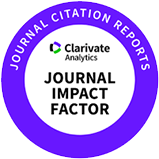Development and characterization of endolysin SALys78925 with antimicrobial activity against Streptococcus agalactiae
Abstract
<italic>Streptococcus agalactiae</italic> is one of the pathogens in bovine mastitis, which contributes to substantial economic losses in the dairy industry. Endolysins are bacteriophage-encoded peptidoglycan degrading hydrolases, and they have become a novel weapon for selective elimination of target bacteria. This study aimed to identify endolysin with specific lytic activity against <italic>S. agalactiae</italic>, characterize the endolysin SALys78925, and evaluate its efficacy against related pathogens. The whole genome sequence of <italic>S. agalactiae </italic>strain was obtained from the National Center for Biotechnology Information database, and the putative gene for <italic>SALys78925</italic> was retrieved from their genomes. <italic>SALys78925</italic> was overexpressed in <italic>Escherichia coli</italic> BL21 (DE3) using pET system. The optimal conditions of SALys78925 were determined by assessing lytic activity under various ranges of pH, NaCl concentration, temperature, metal ions, and dosage. <italic>In silico</italic> analysis revealed that SALys78925 possesses a modular structure that comprises an N-terminal enzymatically active domain (Peptidase_M23) and a C-terminal cell wall binding domain (Zoocin A target recognition domain). SALys78925 exhibited maximal lytic activity against <italic>S. agalactiae</italic> KCCM 40417 at pH 9.0 and 37℃, but the activity decreased in a salt dose-dependent manner. The addition of Mn²⁺ enhanced SALys78925 activity, whereas Zn²⁺ reduced it by approximately 80%. Antimicrobial spectrum analysis revealed that SALys78925 exhibited varying degrees of lytic activity against multiple bacterial species, demonstrating potent lysis of <italic>S. agalactiae</italic> and lysis of <italic>Streptococcus parauberis</italic> and <italic>Enterococcus faecalis</italic>. These findings suggest that SALys78925 could be a promising candidate for preventing bovine mastitis in the dairy industry and beyond, offering a potential alternative to conventional antimicrobial treatments.
















